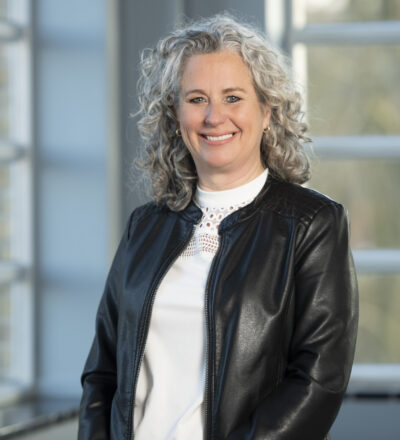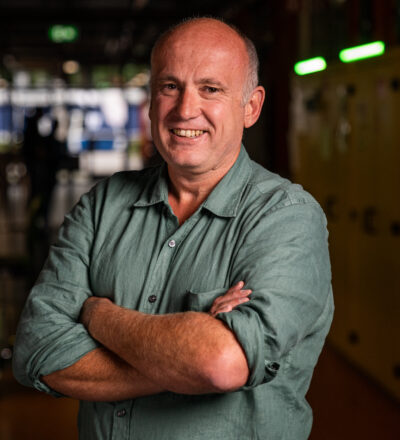In 2050, the process industry must be completely energy-neutral and circular: a complex task. It requires a large-scale transition, with technologies that are currently in their infancy-stage or don’t even exist yet. As of right now, it is all hands on deck and we need to start developing ànd scaling up such technologies. Therefore, ISPT’s Long Term Program (LTP) addresses the question of what technologies need to be developed to help achieve the envisioned circular economy of 2050. An unique initiative where universities and companies collaborate to work on the future of the process industry.
Recently, the Long Term Program has received attention from several media outlets. In this article we highlight why collaboration around this pressing societal issue is necessary, what research will be conducted in the program and how this will contribute to the future of the process industry.



Roadmap for process industry 2050
In the context of the National Circular Program NL Circular by 2050, the (process) industry must be fully sustainable by 2050. An ambitious goal, but also an urgent necessity. Tjeerd Jongsma, Director of ISPT, explains in NPT-Magazine: “We are facing a major transition that will have a significant impact on the future of process technologies. Sustainable energy has to become the new engine of the circular economy. The central question of LTP is therefore: “How do we make the process industry more sustainable and which technologies will help us achieve that?”
In this question lies the crux. The value chains of the future are uncertain, and the technology of the future does not (yet) exist.
The LTP therefore aims to provide guidance for the development of process technology up until 2050, by focussing on finding out which techniques and technologies we will need to truly establish such an electricity-driven, circular system. What makes the LTP truly unique is the fact that apart from the industries, 5 Dutch universities are joining forces on a societal problem, with innovation as the focus.
A unique collaboration
Here, good intersectional collaboration comes into place. Tjeerd Jongsma states, “ISPT was founded to unite forces within process technology through open innovation: the sharing of expertise, know-how, practical experience, and R&D ideas. We have gained a considerable amount of experience within ISPT, and that experience is proving valuable now.”
When it comes to cross-sectoral connections, ISPT directly links scientists in socio-economic transitions – (bio)process technology, catalysis, and material technology – with the business sector within the Long Term Program (LTP). Five universities (the 3 technical universities, TU Delft, TU Twente, and TU Eindhoven, supplemented by the University of Groningen and Wageningen University & Research) along with experts from the industrial sector, collectively explore, what the process industry will need in the future. “This is truly a unique collaboration that the Netherlands has not seen before. And I am extremely proud of that”, Tjeerd Jongsma says.
The unique aspect is that all technical universities are working together, and not competing.
Tjeerd Jongsna, Director of ISPT
Sascha Kersten, Program Director of the LTP, adds on: “We are facing significant challenges, and there are no precedents. I believe that a lot can be achieved thanks to the knowledge and insights we already have and the technologies that already exist. However, the changes are so substantial that it’s also conceivable that entirely new concepts will have to emerge. That makes it both uncertain and fascinating.”
“Besides the participating professors are young for a reason”, states Klaartje Rietkerken, Director of Operations at ISPT, towards Change.Inc: “They will still be working on these subjects in 2050 and can later nominate young doctoral candidates to continue their work. The LTP is a long-term program on all fronts.”
Funding of the program
Not unimportant: the subsidies required for this program, from both the government and the business sector, have already been secured in advance. This gives the participating universities free rein to articulate a vision for the future. The British call this “sandpitting.” This method leads to acceleration, which is urgently needed: because we must start working now on the technologies we will need in 2050. Furthermore, this method ensures higher quality. When you already have the commitment of the government and the business sector in advance (in the form of subsidies), there is much more room for knowledge mobilization, creativity, and out-of-the-box thinking.
Within LTP, the TKI Energy and Industry is responsible for the public contributions. A logical choice since their objectives closely align with those of the LTP. Director Rob Kreiter (TKI) explains: “When it comes to building consortia and organizing projects, ISPT is an important player for us. The objectives of LTP are in line with our own innovation agenda. We encourage the formation of consortia with innovation projects and the market introduction of innovative products and technologies. We do this, among other things, by sharing knowledge and leveraging a strong network.”
First project: Trace Removal Using Electrically Powered Separations (TREPS)
The first project within the LTP has already started. It’s called TREPS (Trace Removal Using Electrically Powered Separations), and as the name suggests, the project focuses on trace removal using electricity. Tjeerd Jongsma explains in Change.Inc: “In a truly circular economy, the process industry uses products and raw materials over and over again. But the more times these products are reused, the more components (traces) accumulate in them that need to be removed. Think of allogens, such as chlorine and fluorine, for example. To maintain a clean loop, these traces need to be separated, and we need to do it in a sustainable way. Electrification is a promising approach.”
Within the TREPS project, the most promising technologies are discussed and determined to shape this approach. How does this work? According to Klaartje Rietkerken, the actual implementation of LTP projects is relatively straightforward. “We bring together the right people so that all knowledge and expertise on a subject are present in one room. Then, they come together for a few days in a row. This sparks a discussion, led by a moderator, and gradually we work towards a conclusion. This way, we outline the most promising routes for each topic.”
More about the Long Term Program
LTP is a new programme within ISPT aimed at developing process technology for 2050. Value chains from raw materials to end products in industry are expected to have changed radically by then. A unique programme within the Netherlands, as it deals with technology that does not yet exist today.
